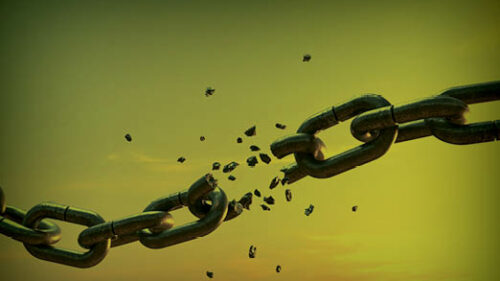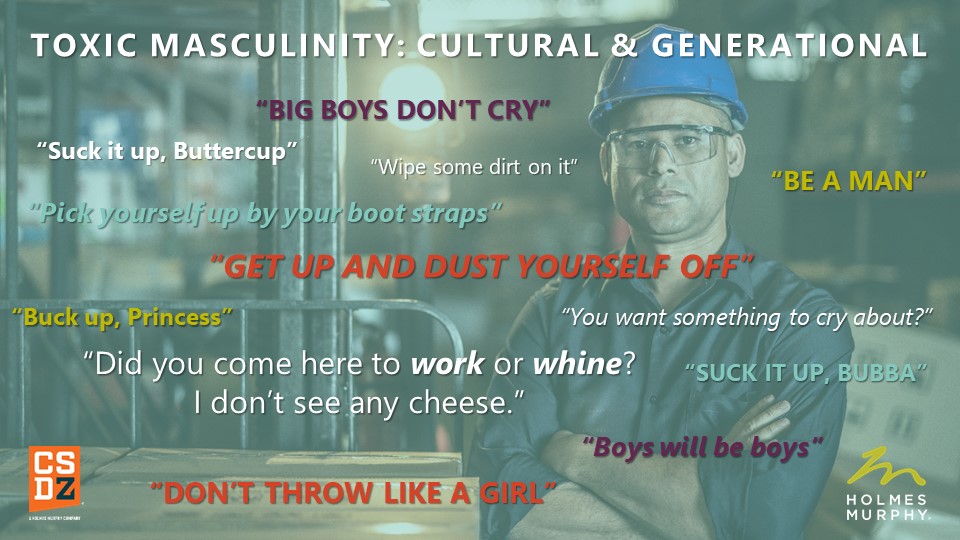For the 25 years I’ve been in the construction industry, there is one trait among all others that has been held up as the most quintessentially “construction-esque” — the stoic workforce culture.
Construction tradespersons evoke a particular hard-nosed and smashmouth image showing pride of their chosen occupation and craft. Individually and collectively, construction workers are strong-willed and never give up. These qualities of tenacity and persistence reflect the grit of the workforce.
Construction trades workers are also known for their loyalty and commitment to excellence in their chosen craft, and they have honored old-school traditions. These traditions are mostly unspoken rules of engagement that become embedded like DNA, and they become the accepted way things are done in a job, trade, or within a company.
This is how the stoic culture of not talking about feelings or showing any outward signs of being different is so strong. Above all else, construction workers are tough and showing feelings could be perceived by others as a possible sign of weakness.
Understanding the Invisible Construction Crisis
High-risk industries, like construction, recognize the modern workforce is at a crossroads. The invisible crisis of mental health, substance misuse, and suicide is all too real, and the risk is too great to not challenge the status quo on the stigma that keeps workers and their families from seeking both physical and mental health care services.
If the industry doesn’t dismantle and demolish the stigma, more workers will suffer in silence and continue to struggle. Unfortunately, there will be more preventable deaths by addiction, overdose, or suicide.
Addressing the Toxic Masculinity Stigma
Stigma is the fear of the unknown. It’s a wall that creates a barrier between people and between people needing care and the caregivers who can offer help. Stigma is an invisible force that keeps people from recognizing that help is within reach and understanding that treatment and recovery are possible. The forcefield of stigma is strong. It runs deep and is anchored by cultural values and generational mores.
A construction industry thought leader I respect is Brent Darnell. He was the earliest practitioner I know in the discipline of emotional intelligence focused on the construction industry. Since 2000, Brent has been discussing the strengths and weaknesses of construction’s alpha male culture in what he has also described as hypermasculine culture. As in many aspects of life, what has been our greatest strength can become our greatest weakness.
As I work to break the stigma in construction industry, I find telltale signs of what is also described as toxic masculinity. Check out this image that reflects the toxic masculinity stigma is rooted in.
Changing the Construction Discussion
There are cracks in the foundation of the stigma in the construction industry. One of the cracks is the movement toward building a caring culture in construction. Mental health and suicide prevention became the “next frontier in safety” between 2008-2013.
From 2014-2020, a “safety 24/7” culture in the construction industry was successfully reframed from getting workers home safe at the end of shift to getting workers back to work safe from home where they were suffering in silence. This is where the caring culture creates a safety net and where employees have support from employers, resources like an Employee Assistance Program, and peer-to-peer support. Now, the next move is to establish a culture of worker wellbeing.
Discussing the Diversity, Equity, and Inclusion Movement
Another crack in stigma is the movement for diversity, equity, and inclusion (DEI) in construction industry.
The industry has a shortfall of over 430,000 jobs, and workforce development is the major initiative of the industry. The opportunity to recruit generations of younger workers will replace the expected retirement wave of the aging workforce. It’s well-known that diversity and inclusive cultures outperform traditional cultures. It’s also known the younger generation more openly embraces mental health in the workplace.
Companies seeking to become leaders in DEI are challenging the traditions and associated stigma. I’m excited to see the benefits of these changes. I foresee the wall of stigma slowly crumbling in the future. This will be positive for the entire construction industry.
I’m proud to be partnering with courageous leaders and organizations united to ensure their workers truly are safe while at work AND at home. I’m humbled to work for a company that invests in helping an industry address and solve a vexing problem like the invisible crisis in construction. And, I’m grateful to have such meaningful work that is life-affirming and lifesaving.
If your organization is needing help breaking the stigma, don’t hesitate to reach out to your construction consultant at either Holmes Murphy or CSDZ. We also have a page on our CSDZ website dedicated solely to understanding what’s “under the hardhat.” Feel free to check it out and explore the resources there.








